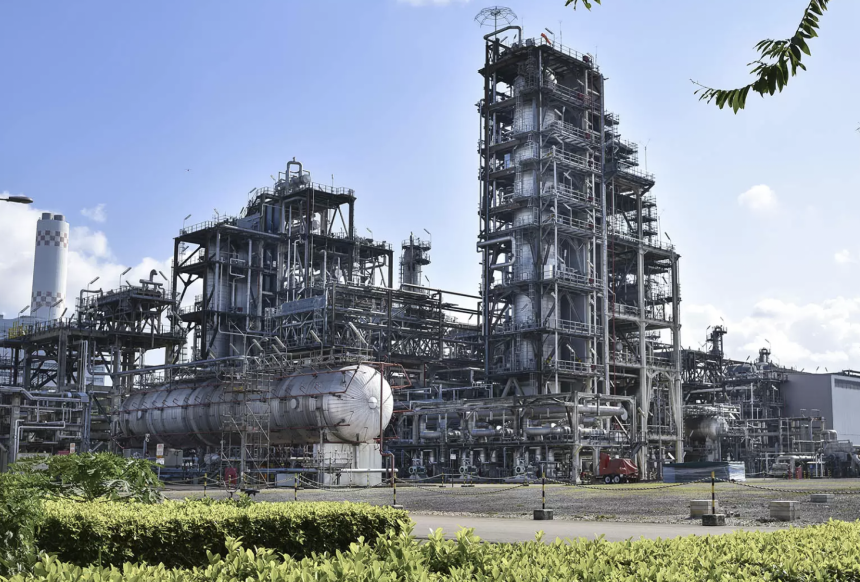Building materials are the backbone of the construction industry, shaping the structures that define our cities and communities. Over the centuries, these materials have undergone a remarkable transformation, driving innovation and revolutionizing the way we build. From humble beginnings using wood, stone, and clay to the modern marvels of steel, concrete, and smart materials, the evolution of building materials has truly transformed the industry.
Traditional Building Materials
Traditional building materials such as wood, stone, and clay have been used for centuries, forming the basis of construction around the world. Wood, in particular, has been a staple material due to its abundance and ease of use. Stone and clay were also widely used, especially in ancient civilizations, for their durability and versatility. These materials laid the foundation for construction techniques and architectural styles that have stood the test of time.
Star building on these traditional materials, builders, and engineers began to experiment with new techniques and materials to overcome their limitations. The Industrial Revolution brought about significant changes, with the mass production of materials like iron and steel revolutionizing construction. Steel, in particular, emerged as a game-changer, offering unparalleled strength and flexibility compared to traditional materials. Its use in skyscrapers and large-scale structures transformed the urban landscape, allowing for taller, more innovative designs.
Evolution of Concrete
One of the most significant advancements in building materials came with the development of concrete. Ancient civilizations used a rudimentary form of concrete made from lime, sand, and water. However, it was not until the 19th century that modern concrete, using Portland cement as a binder, was invented. This innovation revolutionized construction, offering a versatile and durable material that could be molded into almost any shape. The introduction of reinforced concrete further enhanced its strength, allowing for the construction of bridges, dams, and high-rise buildings.
Rise of Steel
Steel quickly became the material of choice for builders and engineers due to its strength, durability, and versatility. The ability to fabricate steel into beams, columns, and other structural elements allowed for greater design flexibility and efficiency. Steel also offered significant advantages over traditional materials, such as wood and stone, including higher strength-to-weight ratio, fire resistance, and recyclability. Its use in construction has led to the creation of iconic structures that define modern skylines around the world.
Innovations in Insulation Materials
Insulation materials have also seen significant advancements, particularly in terms of energy efficiency and sustainability. Traditional materials like fiberglass and mineral wool have been supplemented by newer options such as foam boards and spray foam. These materials offer superior insulation properties, helping to reduce energy consumption and lower carbon footprints. Additionally, many of these materials are made from recycled or renewable sources, further enhancing their environmental credentials.
Sustainable Building Materials
The push for sustainability in construction has led to the development of a wide range of eco-friendly building materials. Bamboo, for example, is a rapidly renewable resource that is both strong and lightweight, making it an ideal alternative to traditional hardwoods. Recycled materials, such as recycled steel and plastic, are also gaining popularity due to their reduced environmental impact. These sustainable materials not only help to conserve natural resources but also contribute to healthier and more energy-efficient buildings.
Smart Building Materials
The advent of smart materials has brought about a new era of innovation in construction. These materials are designed to respond to changes in their environment, offering benefits such as self-healing, energy generation, and enhanced durability. Self-healing concrete, for example, contains bacteria that produce limestone, helping to repair cracks and prolong the life of the structure. Phase-changing materials are another example, capable of storing and releasing heat to regulate indoor temperatures efficiently.
Future Trends in Building Materials
Looking ahead, the future of building materials is filled with exciting possibilities. Advancements in nanotechnology, biotechnology, and 3D printing are expected to revolutionize the way we design and construct buildings. Nanomaterials, for instance, offer unprecedented strength and durability at a microscopic scale, opening up new possibilities for lightweight and ultra-strong structures. Biologically inspired materials, such as self-growing bricks, could lead to buildings that repair themselves over time. 3D printing, meanwhile, allows for the rapid and cost-effective production of complex structures, paving the way for customizable and sustainable construction solutions.
Conclusion
In conclusion, the evolution of building materials has been instrumental in shaping the modern world. From the early days of wood and stone to the cutting-edge innovations of today, these materials have transformed the way we build, offering new possibilities for design, efficiency, and sustainability. As we look to the future, the continued development of building materials will play a crucial role in creating the cities and structures of tomorrow.
Lynn Martelli is an editor at Readability. She received her MFA in Creative Writing from Antioch University and has worked as an editor for over 10 years. Lynn has edited a wide variety of books, including fiction, non-fiction, memoirs, and more. In her free time, Lynn enjoys reading, writing, and spending time with her family and friends.















